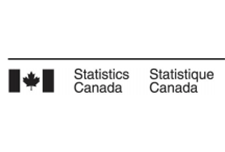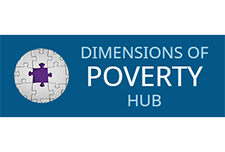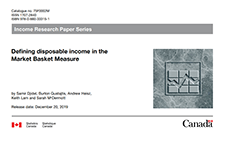Discover financial empowerment resources
Discover financial empowerment resources
In Canada, governments provide seniors with a spectrum of income supports and programs intended to maintain a baseline standard of living in retirement. For many years, the social safety net has been praised for producing lower poverty rates for seniors, as measured by the Market Basket Measure...

As stated in the Poverty Reduction Act, the Market Basket Measure (MBM) is now Canada’s Official Poverty Line. The Northern Market Basket Measure (MBM-N) is an adaptation of the MBM that reflects life and conditions in two of the territories – Yukon and Northwest TerritoriesNote. As with...

The Dimensions of Poverty Hub, sponsored by Employment and Social Development Canada (ESDC), enables Canadians to track progress on poverty reduction. The updates as of September 2020 include poverty statistics based upon the new 2018-base Market Basket Measure...

This report presents the findings of extensive research about employable singles on social assistance undertaken by Toronto Employment and Social Services, in partnership with the Ontario Centre for Workforce Innovation. Drawing on data from 69,000 singles who were receiving social assistance in...

This report provides quantitative and qualitative data about the experience of hunger and poverty in Toronto during COVID-19. Based on phone surveys with over 220 food bank clients in May and June 2020 and an analysis of food bank client intake data, the report demonstrates that COVID-19 has led to...

This report from Statistics Canada shares data on median after-tax income and overall poverty rate decline based on 2018...
This paper discusses the concept of disposable income used in the MBM. Disposable income is a measure of the means available to a Canadian family to meet its basic needs and achieve a modest standard of living. The disposable income of families surveyed in the Canadian Income Survey (CIS) is...

Low income lines are the most commonly used tool for defining and measuring poverty. They provide thresholds below which a household is considered to be living on low income. Low income lines can be constructed in different ways. This brief explains the LICO (Low income cut-off), LIM (Low income...
This working paper compares three commonly used measures of low income used in Canadian poverty analysis. It is the fourth in a series of working papers intended to promote a discussion by participants in our Sounding Board and others. Thresholds and incidences of low-income for the Low Income...
The intention at the time of the creation of the Market Basket Measure was that the content of the basket and its definition of disposable income would be reviewed once several years of data had been collected using the original measure. This was necessary to ensure that it continued to embody a...
The group we analyze throughout this paper is simply the poorest one-third of all families in the U.S. with an able-bodied head between the ages of 25 and 54 (hereafter struggling families or households). This group is larger than the population in poverty (although 83 percent of them fall below...
